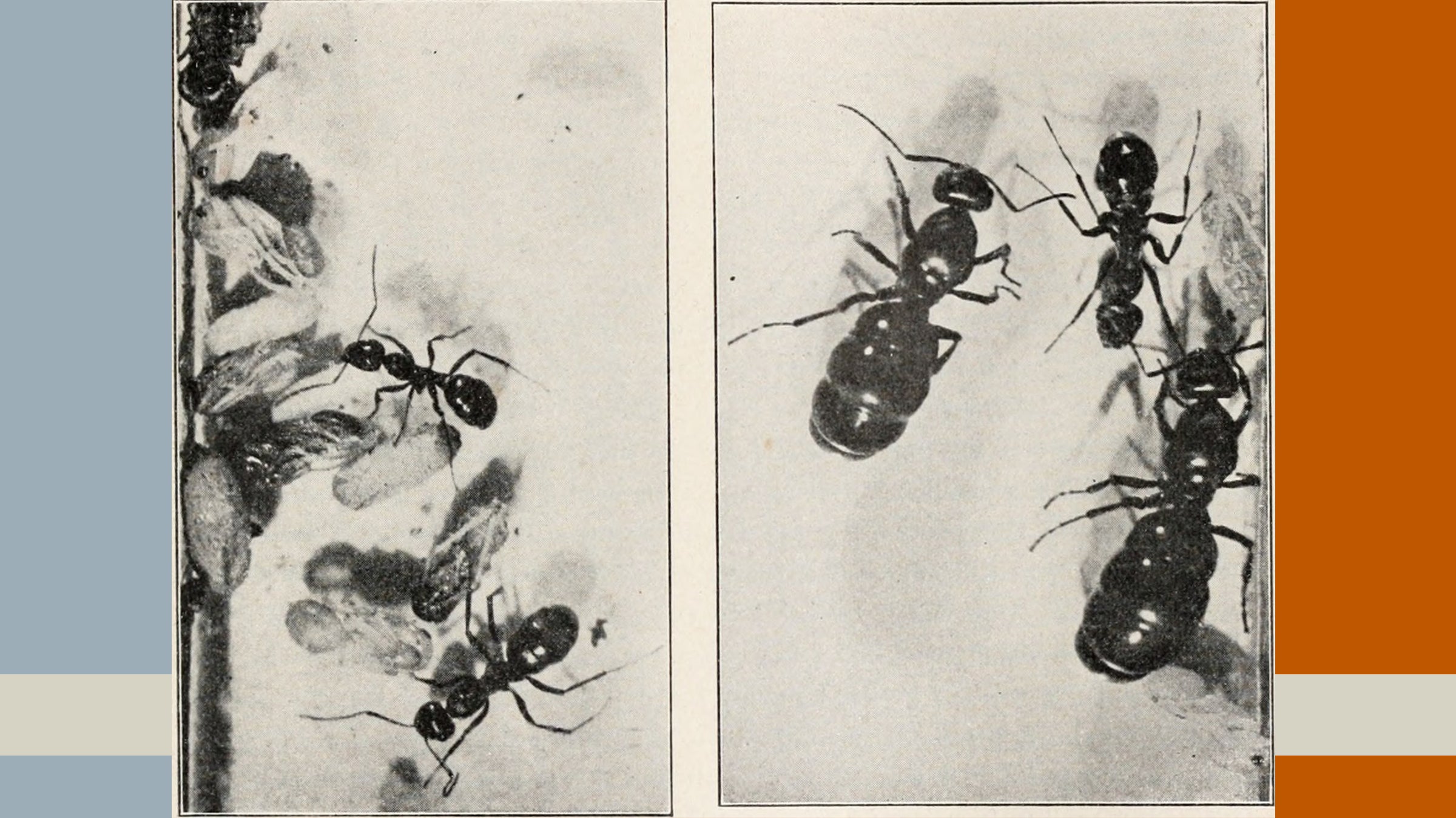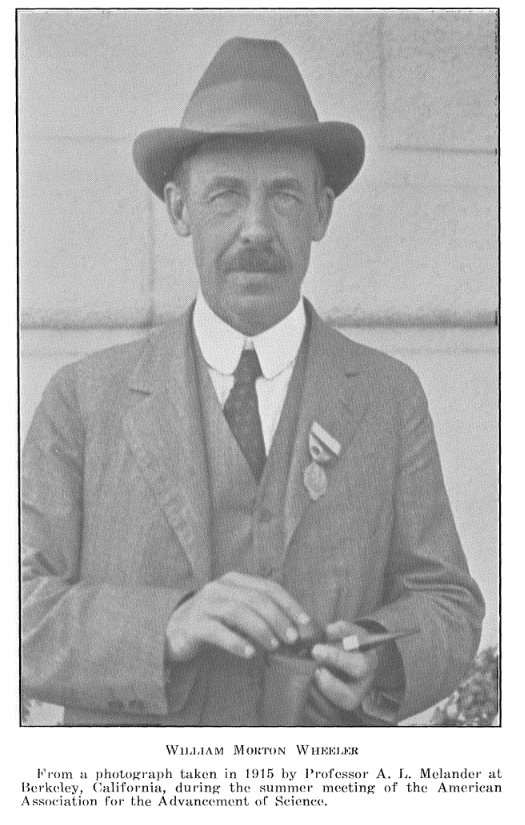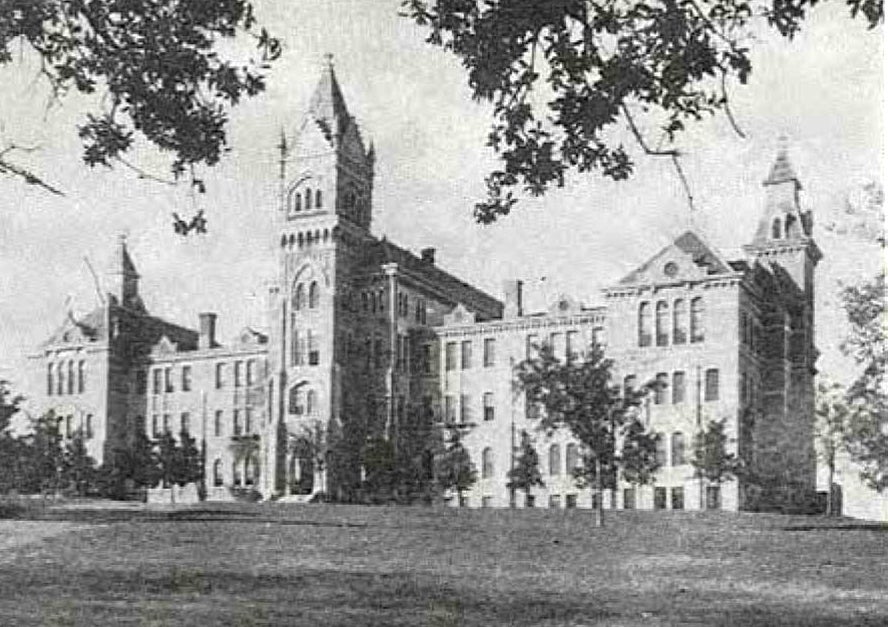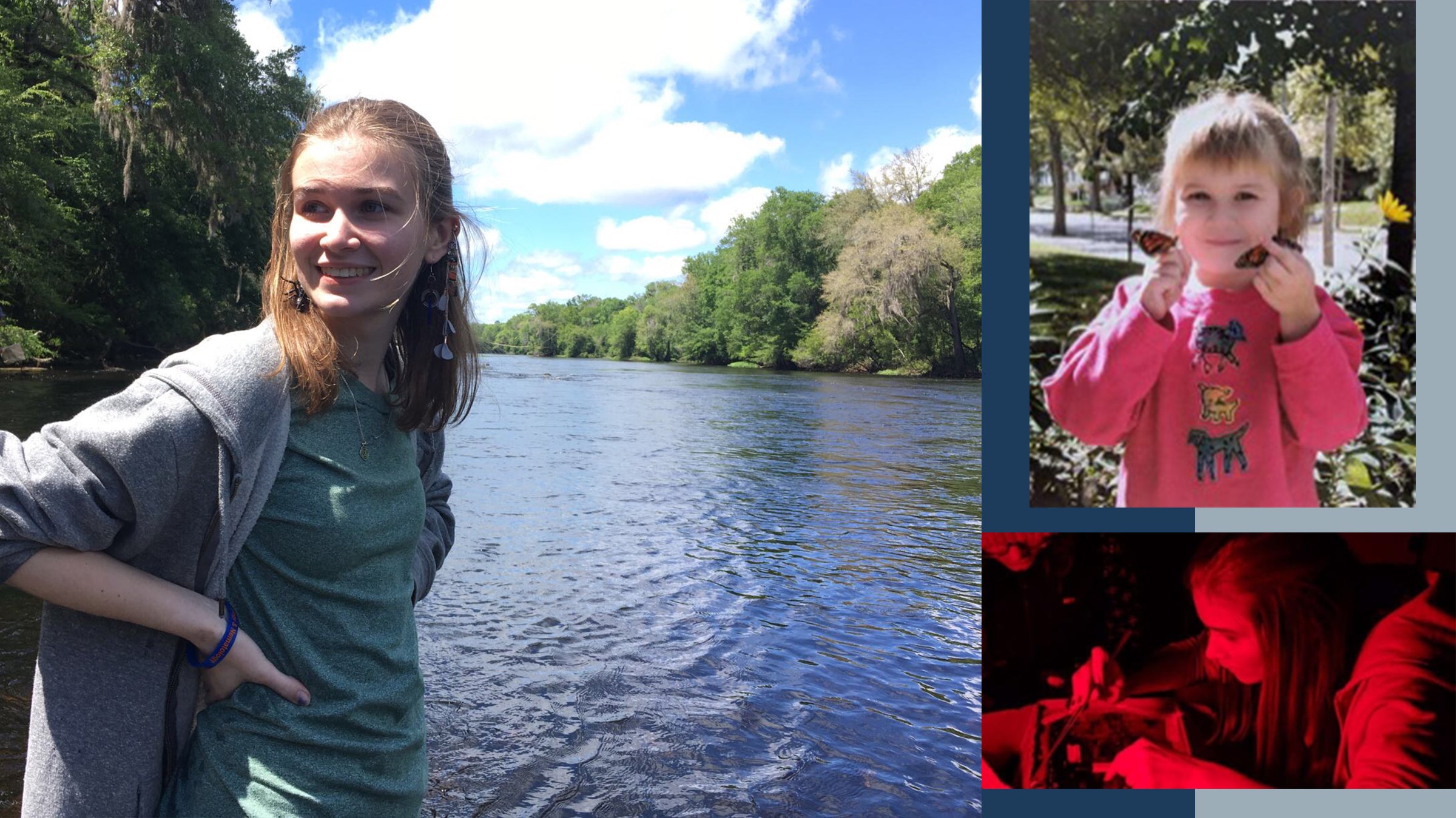
From Ants: Their Structure, Development, and Behavior (1910)
The year 1899 saw some changes in the School of Biology as it then existed, with the spilt into two separate schools (Botany and Animal Biology). It also saw the arrival of William Morton Wheeler (1865 – 1937), an entomologist, professor, and myrmecologist. Wheeler would become a leading authority on the behaviors of social insects, and was considered a taxonomist of the highest order. Two of Wheeler’s works: Ants: Their Structure, Development, and Behavior (1910) and Social Life Among the Insects (1923), long served as standard references.
Wheeler was head of the biology unit which became the School of Zoology in 1900, but his tenure at UT Austin was very short (1899-1903). These four years, however, marked the start of his focus on ants, an area in which he received particular renown.
In 1900, the population of Austin was just over 22,000. The surroundings we recognize today as being dominated by new construction were then still relatively unexplored by scientists in the late 19th and early 20th centuries. Texas was considered to be the northern limit of neotropical ants, but there wasn’t much research being done on these species. Most US researchers at the time were more focused on ants in the north eastern areas of the country. That would change with Wheeler.

In the centennial issue of UT’s Discovery: Research and Scholarship at the University of Texas at Austin, C.P. Oliver shares some of Wheeler’s stories about his time at UT. He states that in 1899, Wheeler had been disappointed at UT’s scarcity of biological equipment and the library’s still-growing selection of journals. Many which he normally read were not available. “Apparently,” Oliver humorously wrote, “he needed solace, a place to meditate or suffer in silence.” To do so, Wheeler would go to Barton Creek which was nothing like it is now with its hip urban surroundings. Barton Creek was outside of the city limits at the time, so it offered a real retreat from human activity. It was during one of Wheeler's solo excursions here that his new research focus appeared. “I happened to see a file of cutting ants (Atta texana), each with its piece of leaf poised in its mandible," Wheeler wrote in one of his many publications, "I vividly remember the thrill of delightful fascination with which I watched the red-brown creatures trudging along under their green loads, and it seemed to me that I had at last found a group of organisms that would repay no end of study.”
Two of Wheeler’s graduate students, Charles Thomas Brues (1879 – 1955) and Axel Melander (1878-1962) were also crucial in driving Wheeler’s interest in ants, as they would often show him species of certain army ants and fire ants that he had never seen before. Both students received their Masters of Science degrees from UT in 1902. Brues and Melander would later become notable entomologists in their own right. Their work focused on taxonomy, feeding habits of insects, insect paleontology, medical entomology, fluorescent staining of insect tissues, and intracellular bacteria of insects.
After Wheeler departed in 1903, Thomas Harrison Montgomery became the head of the School of Zoology until 1908. This year saw a turning point for the School of Zoology when two new instructors came on board who would shape the school for decades: John Thomas Patterson (the PAT building on campus is named after him) and Dana Brackenridge Casteel. Casteel was an entomologist, but as C.P. Oliver puts it: “Patterson could easily carry the label of a pacer. Casteel was to assume more of the duties of a Percheron, giving the pacer an opportunity to perform.” Percheron is any of a breed of rugged draft horses, which perhaps gives an idea of their working relationship.
Patterson would become chairman of the department in 1911 and in 1920 would hire Hermann Muller, a geneticist who studied the processes and frequencies of mutations on the fruit fly, Drosophila melanogaster. The period of gene mutation studied through Drosophila systematics marks the start of another period of UT entomology. Read about this in part 2…
Check out all of our UT Entomology History blogs here…

No. That's not Dracula's summer home. That's the Old Main Building, original home to the School of Biology.
SOURCES
Discussions with Dr. Larry Gilbert, Director of the Brackenridge Field Lab
Discussions with Dr. Alex Wild, Curator of the Entomology Collection
Oliver, C.P. “Zoology,” Discovery: Research and Scholarship at the University of Texas at Austin, Centennial Issue 1983, pg. 13-16.
Wheeler, William Morton. “A Study of Some Ant Larvae, With a Consideration of the Origin and Meaning of the Social Habit Among Insects.” The Proceedings of the American Philosophical Society, vol. LVII, No. 4, 1918.



